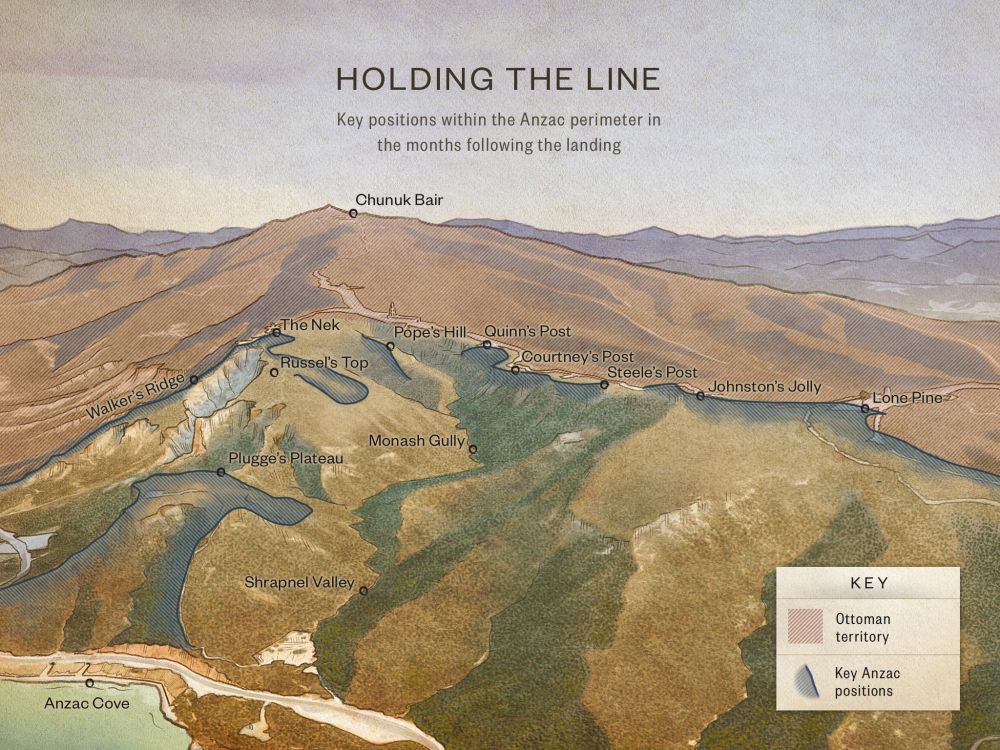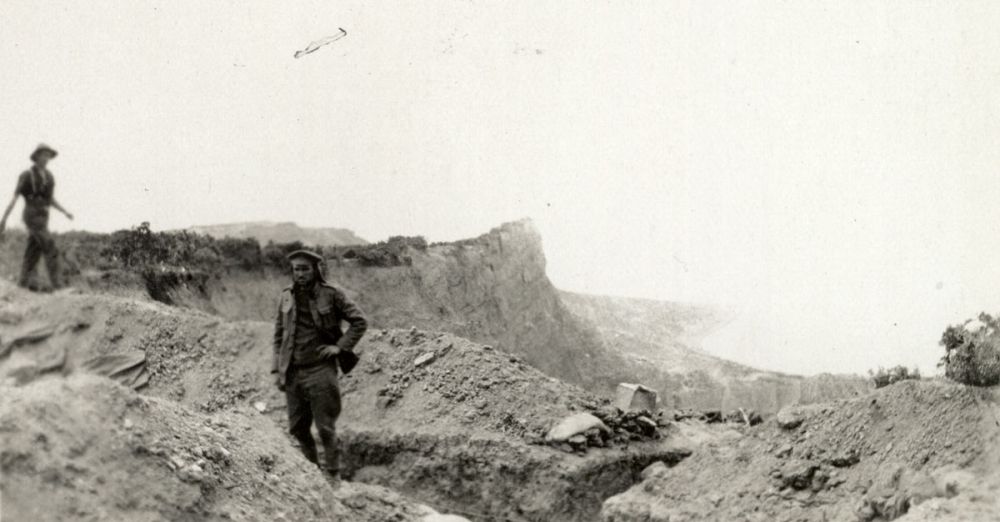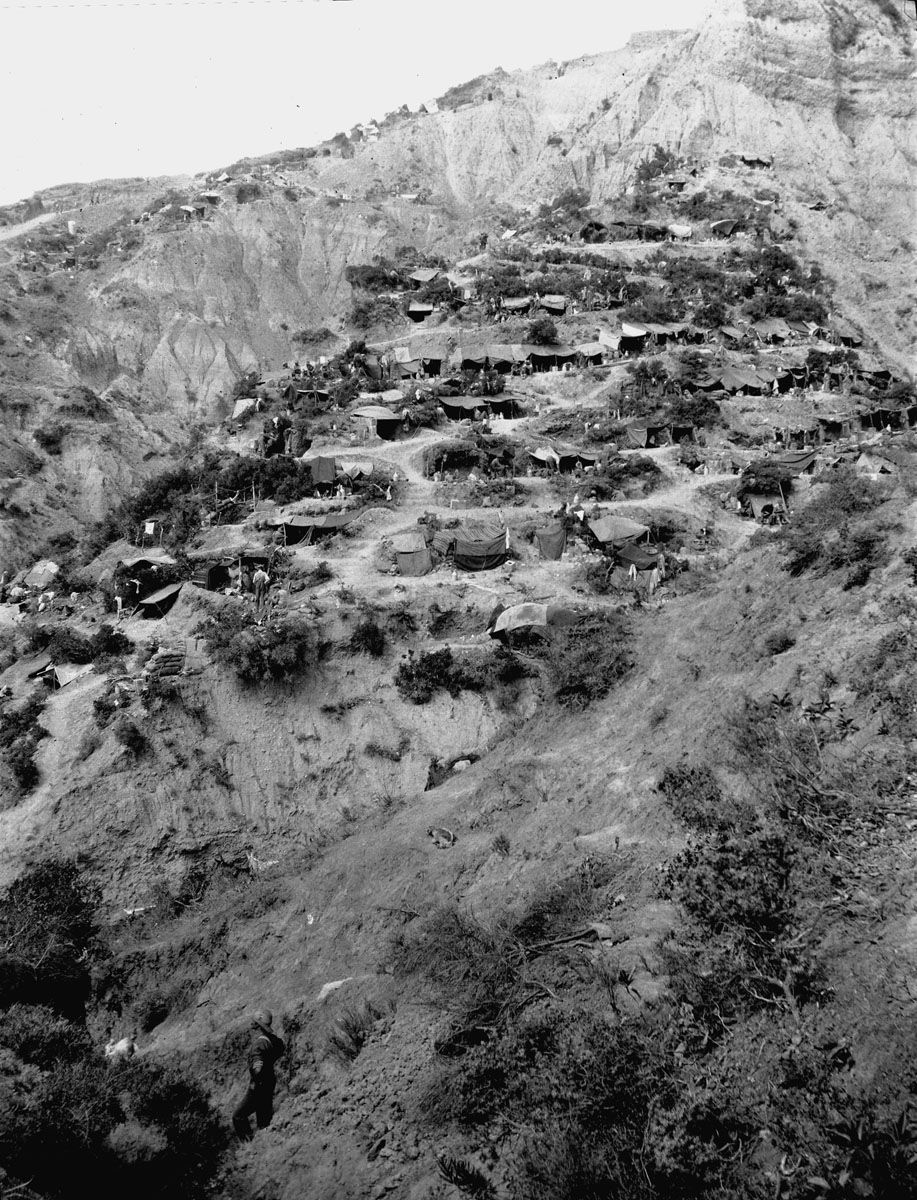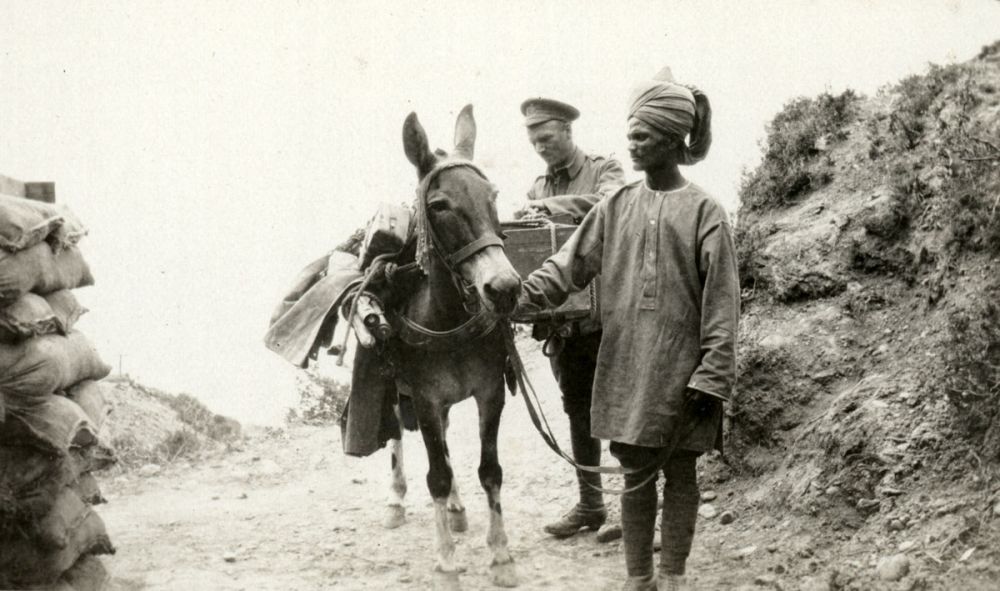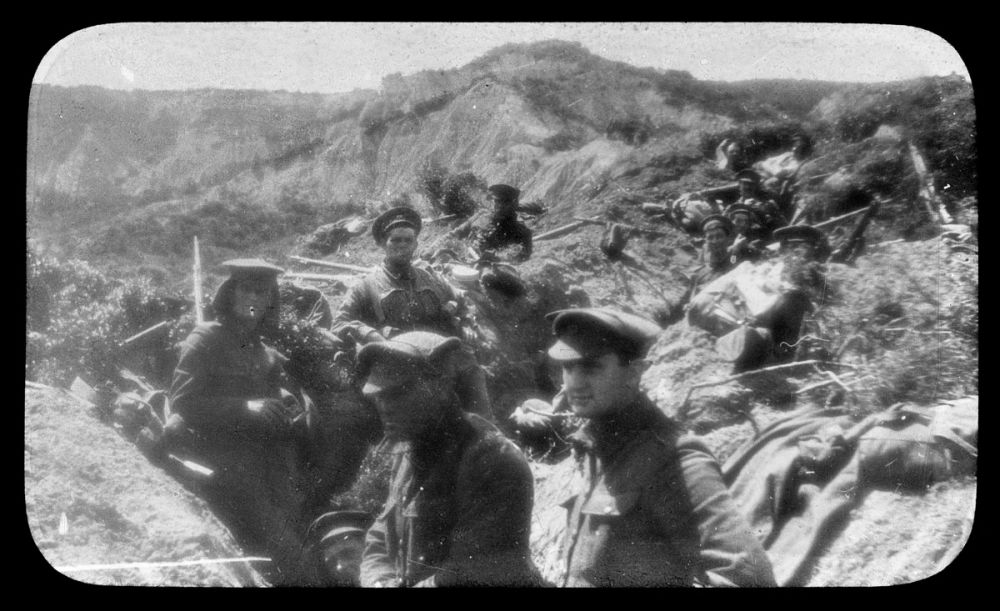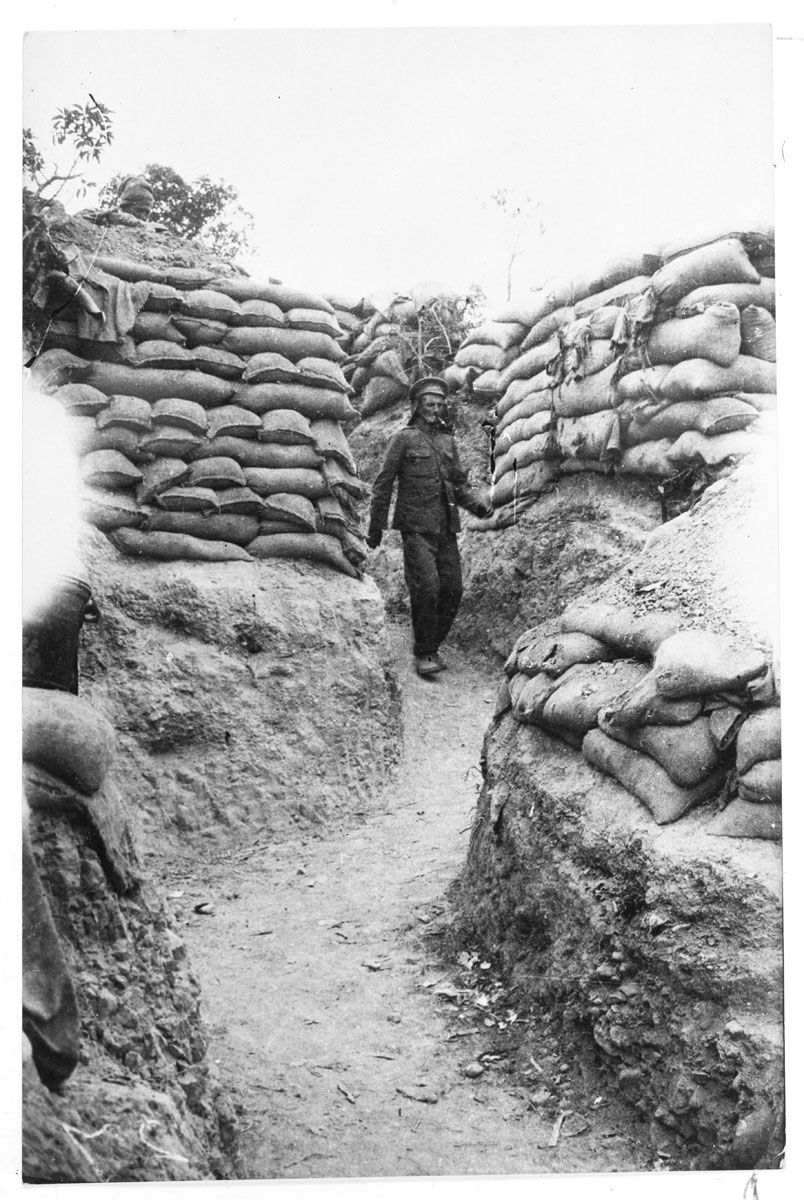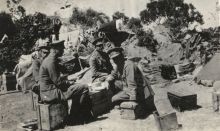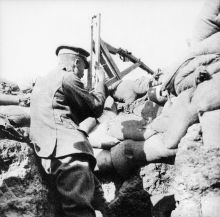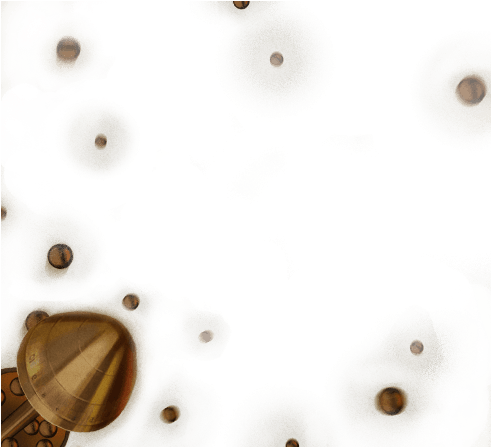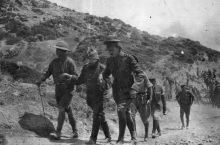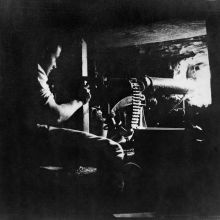Russell’s Top
On 25 April 1915, the Australians landed at 4.30 in the morning and made their way up here. Later that day, men from the Auckland and Canterbury Infantry Battalions followed them up and pushed inland. But on the evening of the 25 April they were driven back to where you now stand. This critical position was held by New Zealand machine gunners that first night. We know this because men from these battalions are buried nearby in Walker’s Ridge cemetery. The next day an Australian battalion occupied this position and came under heavy attack and was reinforced by the Wellington Infantry Battalion.
Lieutenant-Colonel William Malone, commander of the Wellington Infantry Battalion, consolidated this position. Under Malone, the sappers of the New Zealand Engineers dug the trenches that you see here behind you.
Later that month, Brigadier General Andrew Russell’s Mounted Rifles arrived as dismounted infantry and dug forwards to occupy the ground up as far as the Nek.
And if you walk forward from here through the trench lines you will see the trenches developed by the New Zealand Mounteds during May and June 1915.
The New Zealanders were still digging forward when, on 19 May, the Ottoman army mounted its big night counterattack. There was a gap between the unfinished trenches. As the Turks ran forward through this gap, the Anzacs mowed them down, the place was littered with hundreds of Turkish bodies.
At the end of the month they had an armistice to bury the dead, but burying most of them was impossible. All they could do was throw a light covering of earth over the dead. Any attempt to pick up the bodies that had been lying out in the hot sun for days saw the bodies simply disintegrate in their hands.
The gully directly below you, which goes down to the beach, was known as Mule Gully, because it provided safe cover for the mules of the Indian Mounted Battery that was set up here on Walker’s Ridge and Russell’s Top. The mules brought supplies up the ridge.
The New Zealanders thought that Mule Gully was quite exotic because if they went through the mule lines, there was a chance they would get a curry or a chapatti, and that was a great change from bully beef and biscuits.


